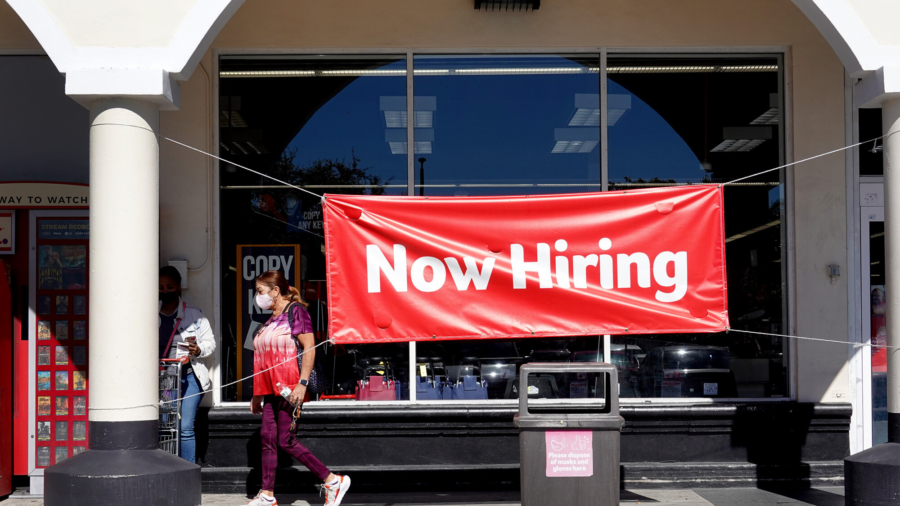A record number of American workers quit their jobs as of the last business day in March while the number of job openings rose to an all-time high, pointing to a tight labor market as businesses struggled to hire enough workers to meet demand.
The Labor Department said in its monthly Job Openings and Labor Turnover Survey (JOLTS) on May 3 that job openings, which are a measure of labor demand, rose 205,000 to 11.5 million on the last day of March, the highest level in the history of the data series.
The number of hires remained little changed in March at 6.7 million, while total separations—which include quits, layoffs, and discharges—edged up to 6.3 million.
While the number of layoffs and discharges remained largely flat, the number of quits rose to a record high of 4.5 million.
The data shows there were nearly twice as many job openings as there were unemployed people, with employers continuing to face difficulties hiring workers, while boosting wages to attract and retain staff.
“The employment situation should give workers continued confidence, but poses challenges for managers and businesses,” Bankrate Senior Economic Analyst Mark Hamrick told The Epoch Times in an emailed statement.
Difficulty finding qualified workers continues to be a major challenge for America’s small businesses, according to a recent report from the National Federation of Independent Business (NFIB), which showed that nearly half of small business owners raised compensation in March to attract talent.
“The labor shortage has not eased on Main Street as the number of job openings exceeds the number of unemployed workers,” Bill Dunkelberg, NFIB Chief Economist, said in a statement.
“Owners have continued to increase their compensation in March to attract the right employees for their open positions, however, these rising labor costs will be passed on to their consumers through higher selling prices,” he added.
The NFIB report showed that 22 percent of small business owners cited labor quality as their top business problem, in second place behind inflation.
Analysts are now looking to the Labor Department’s closely-watched employment report, due for release on May 6, which will show how many jobs were created in the U.S. economy last month.
Consensus forecasts put that number at 400,000, which would mark a slight drop over the prior month’s 431,000 new positions.
“Jobs creation, or hiring, should be on par with the previous solid reading and the unemployment rate could slip to match the pre-pandemic low of 3.5 percent,” Hamrick said.
“Wage growth should be solid, but insufficient to stay ahead of rising consumer prices,” he added.
While wages have risen solidly in nominal terms in recent months, the higher pace of inflation means that many American households saw their pay shrink in real terms and their purchasing power decline.
“Unfortunately, inflation has rained on the job market’s parade, and weighs on consumer sentiment and spending ability. If one is already employed or content with work, attention turns to inflation, the unwanted visitor which exacts a cost from household finances,” Hamrick said.
Friday’s jobs report will show whether there’s been any pickup in the historically depressed labor force participation rate, which is a measure of the number of people in the workforce.
High inflation combined with a drop in the savings rate could prompt some people who had intended to retire during the pandemic to re-enter the labor force.
From The Epoch Times


